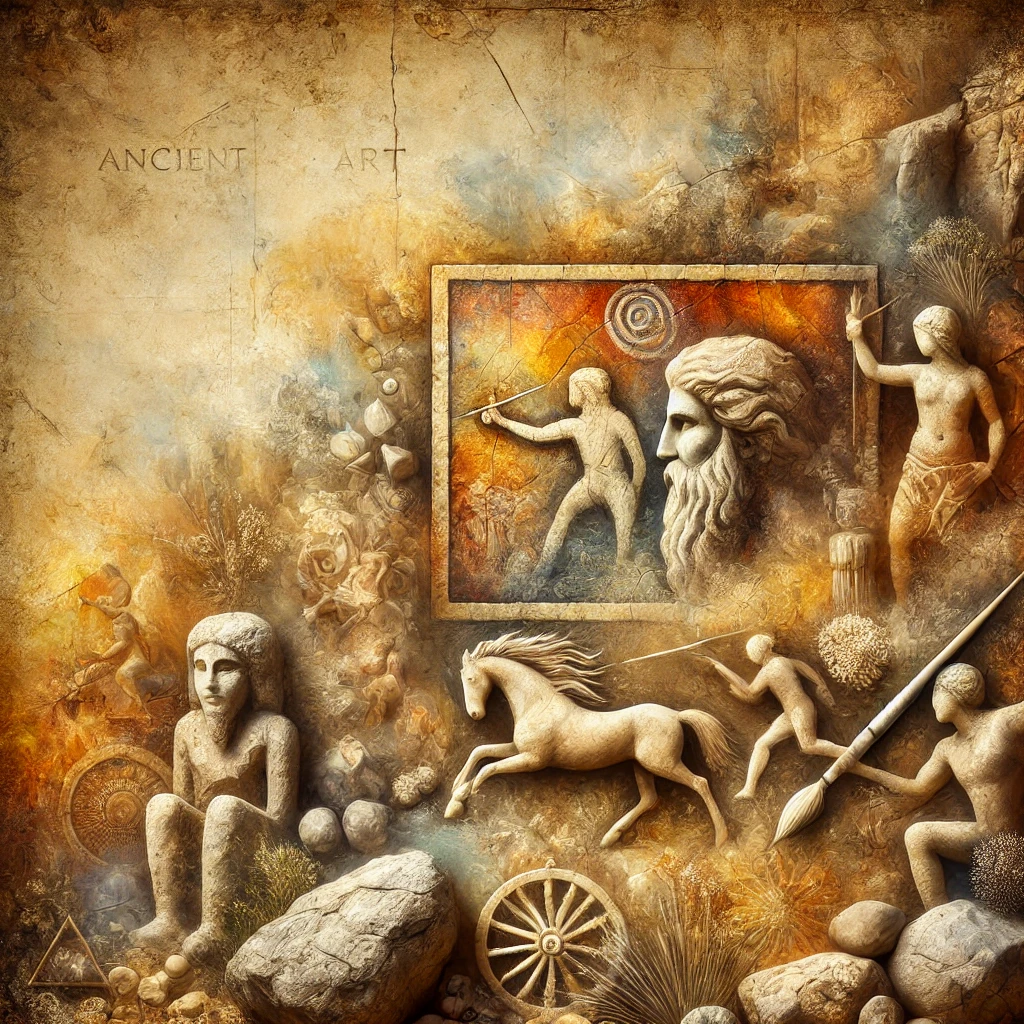Throughout human history, art has served as a reflection of society, culture, and personal expression. Ancient art, in particular, offers a profound insight into the lives, beliefs, and aesthetics of early civilizations. From the cave paintings of Lascaux to the sculptures of ancient Greece, the artistic legacy of ancient cultures continues to inspire and educate us today. This article explores the rich heritage of ancient art, its influence on modern culture, and its timeless value.
The Evolution of Ancient Artz:
Ancient art is an umbrella term encompassing diverse forms of creative expression from early civilizations across the world. From pottery and sculpture to paintings and textiles, ancient art varied widely in form and purpose. Civilizations such as Ancient Egypt, Mesopotamia, and Greece are well-known for their unique contributions to art, each representing their cultural values, beliefs, and rituals.
For example, Egyptian art primarily focused on themes of the afterlife, religious devotion, and the celebration of pharaohs. Egyptian artists depicted these subjects through highly stylized, symbolic forms. In contrast, Greek art evolved over time to focus on realism, human anatomy, and mythology, influencing Western art for centuries to come.
Art as a Reflection of Culture:
Ancient artz was not merely decorative but often served ceremonial, religious, and communicative purposes. In cultures without written language, art acted as a storytelling medium. Cave paintings found in France and Spain are believed to document hunting expeditions and convey important knowledge to future generations. Similarly, ancient sculptures, such as the iconic statues of the Buddha in Asia, carried spiritual significance and served as focal points of worship.
It’s fascinating to see how the art of these civilizations continues to influence modern art, architecture, and design. The intricate patterns and geometric designs of Ancient Mesopotamian and Egyptian art can still be found in contemporary art forms, reflecting how enduring these ancient traditions are. This cultural persistence leads us to consider the importance of understanding and preserving ancient art.
Influence on Cultural Traditions:
Ancient artz has greatly shaped modern cultural traditions, particularly in societies with strong historical connections to these ancient civilizations. For example, Cultural Traditions in Colombia are deeply influenced by indigenous art forms. The vibrant colors and symbolic imagery found in the indigenous art of Colombia reflect ancient spiritual beliefs that are still honored in certain rural communities today.
In the American South, Southern Culture also carries traces of ancient artistic traditions. For instance, folk art in the region often draws on African and Native American influences, incorporating themes of spirituality, nature, and storytelling, much like the art of ancient civilizations.
The Global Significance of Ancient Art:
One of the most remarkable aspects of ancient art is its global reach. Across continents, ancient civilizations used art to express their unique worldview, but they also shared common themes such as spirituality, power, and the human condition. From the Great Wall of China to the intricate mosaics of the Roman Empire, ancient art helped shape the cultural identity of entire societies.
Today, these ancient works are preserved in museums and archaeological sites around the world, allowing modern audiences to connect with the past. These artifacts not only provide insight into the technical skills and artistic vision of ancient peoples but also serve as reminders of the human desire to create and communicate through art.
The Role of Technology in Preserving Ancient Art:
In the modern age, technological advancements have made it easier to preserve and study ancient art. Digital imaging, 3D printing, and virtual reality are some of the tools used to recreate and analyze ancient artifacts. These technologies ensure that future generations can continue to learn from and appreciate ancient art, even as the original works may deteriorate over time.
Moreover, online platforms allow people from around the world to access virtual exhibits of ancient art, expanding the reach and impact of these timeless works. Museums and cultural institutions play a crucial role in preserving the art and heritage of ancient civilizations, ensuring that their legacy continues to inspire future generations.
FAQs:
1. What is the importance of ancient artz?
Ancient artz provides insight into the culture, beliefs, and social structures of early civilizations. It reflects their worldview, religious practices, and daily life, offering a valuable historical record.
2. How does ancient art influence modern culture?
Ancient artz continues to influence modern culture through its symbolism, techniques, and themes. Many contemporary artists and designers draw inspiration from ancient civilizations, particularly in architecture, sculpture, and visual arts.
3. How can ancient art be preserved for future generations?
Preserving ancient art requires a combination of traditional conservation techniques and modern technology, such as digital archiving, 3D modeling, and climate-controlled museum environments.
4. What are some famous examples of ancient art?
Some famous examples include the pyramids of Egypt, the Parthenon in Greece, the Terracotta Army in China, and cave paintings in Lascaux, France.
5. How is ancient art different from modern art?
Ancient art often focused on religious and ceremonial themes, using symbolic and stylized forms. Modern art tends to be more focused on individual expression, experimentation, and abstraction.
6. Why should we study ancient art?
Studying ancient art helps us understand the history and cultural development of civilizations. It also allows us to appreciate the creativity, technical skill, and intellectual achievements of early societies.
7. How does ancient art contribute to global culture?
Ancient art serves as a foundation for many cultural traditions worldwide, influencing modern art, architecture, and design. It also fosters a sense of global interconnectedness, as ancient civilizations shared common themes and artistic expressions.
Conclusion:
Ancient art is not just a relic of the past but a living testament to the creativity and vision of early civilizations. Its influence can be seen in everything from architecture to digital art, reminding us of the enduring power of human expression. By studying and preserving ancient art, we ensure that future generations can continue to draw inspiration from these masterpieces, keeping their legacy alive for centuries to come.



